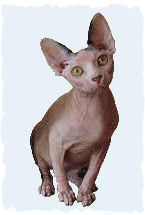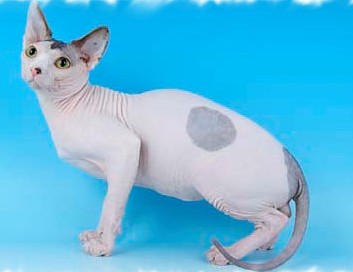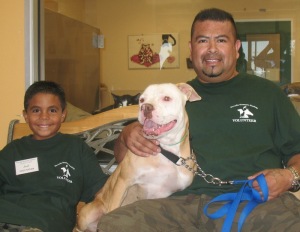Daily Telegraph, London
by Laura Donnelly, Health Correspondent
Conditions like Alzheimer’s are becoming increasingly common and now affect one million felines.
Vets have reported seeing an increase of cases but fear that many owners do not pick up on the symptoms because they do not associate the condition with their pets.
As in humans, dementia leaves the animals confused and distressed. The progressive condition, caused by degeneration of the brain, can cause them to get lost more often or become reclusive.
Researchers from the University of Edinburgh now believe half of all cats over the age of 15 and a quarter aged 11 to 14, are suffering from “geriatric onset behavioural problems”.
Dr Danielle Gunn-Moore, professor of feline medicine at the university, said: “When we look at cats of all ages, we believe about 10 per cent will be affected, which represents about one million cats in Britain.”
She said the risk of dementia in cats was rising because, like humans, cats are living increasingly long lives.
“These days cats are given a better diet, they are more sheltered and tend not to spend so much time outdoors, and they are more likely to be treated for conditions for which they might have been put down in the past,” she said.
“The sad part of this is that it does mean increasing numbers of cats are getting to an age where a lot of them will suffer from dementia.”
Her team of scientists are embarking on a major new study in an attempt to uncover which factors increase the risks for elderly cats, and how best to prevent the onset of dementia.
Her research will examine whether particular breeds of cat are most at risk, and the impact of different lifestyles, other diseases and treatments with different vitamins and drugs.
It is hoped the work could even help in the developments of treatments for the 700,000 people in Britain suffering from some form of dementia.
The same team was the first to discover cats could suffer from Alzheimer’s.
Their research two years ago involved scans which showed changes to the neural system of confused elderly felines were similar to those seen among humans with the conditions. They identified the same amyloid protein present.
Professor Ed Hall, president of the British Small Animals Veterinary Association, said owners were increasingly consulting vets because their pets’ habits had become erratic.
He said possible symptoms in cats included howling for attention, aimlessly wandering, sleeping, repeatedly asking for food after being fed, or missing the litter tray.
Vets needed to take care to exclude other diagnoses – such as arthritis – which might also restrict mobility, and cause distress, he said.
Claire Bessant, Chief Executive of charity the Feline Advisory Bureau, said cats would go to some lengths to prevent owners from spotting the problem.
“You do need to do a bit of detective work if you suspect your cat isn’t quite itself. Cats are masters of disguise, and they are quite private, so if something is wrong they do try to hide it”.
“For example, if they keep getting lost when they go out, they might just stay in more. But equally, the explanation might be that they are suffering from arthritis.”
Research suggests a good diet and mental stimulation can reduce the risk of dementia in cats, as is the case in humans.
Vets recommend playing games with their pets, in order to keep their impulses sharp. However, once cats develop dementia, they can become frightened and confused by too much stimulation or changes to the environment, such as the rearrangement of furniture, or arrival of visitors.
Rebecca Wood, Chief Executive of the Alzheimer’s Research trust, said the studies on cats could also provide an “invaluable insight” into the search for treatments for humans.
“It is interesting that the experts suggest that a good diet, mental stimulation and companionship can reduce the risks of dementia in felines. It would appear that what is best for the owner is also good for the cat,” she said.
It is not just household cats who may be affected by the curse of dementia. The University of Edinburgh and Royal Zoological Society of Scotland are seeking funds for a further study, to find out whether tigers and lions can be affected by the disease.
Lead researcher Lesa Longley said: “We want to study the brains of tigers and lions stored by the Zoological Society to see whether these diseases are present, and whether the kind of environment they are kept in and the level of stimulation they get makes a difference to the likelihood of dementia.”
She said vets did not yet recognise clear signs of dementia in big cats, but that there was some evidence that some older lions became withdrawn, when they would normally have a sociable “pack” mentality, and of both tigers and lions becoming aggressive and confused in older age.
CASE STUDY
Caroline Blundell, from Oxfordshire, knew something was wrong when her cat, Sophie, then aged 18, took to letting out long wails in the middle of the night.
As a vet, Mrs Blundell, 44, was familiar with the growing numbers of elderly cats who are showing signs of dementia.
“It began about 18 months ago, when Sophie started walking around in circles,” she said. “She wasn’t settling, she would circle the furniture endlessly, looking totally bewildered.”
The tortoiseshell cat would get stuck behind doorways, unable to find a way out, and would wake her owner in the middle of the night with long cries of despair, which sounded as though she was trapped or hurt.
“She would let out these terrible emotional wails, often in the early hours of the morning, and when I went to find her she would just be sitting there, looking confused.”
Signs your cat has dementia:
– Getting disoriented and confused; can be shown if cats keep getting trapped in corners, or failing to find their litter tray
– Loud crying, especially at night
– Changed social relationships; becoming more aggressive or attention-seeking than previously
– Increased irritability or anxiety, or less interest in stimuli, such as games
– Altered sleeping patterns
– Changes in activity; aimless wandering, pacing or reduced activity
– Altered interest in food; usually eating less, sometimes eating more, after forgetting they have eaten
– Decreased grooming
source: Dr Danielle Gunn-Moore, Professor of Feline Medicine, University of Edinburgh







